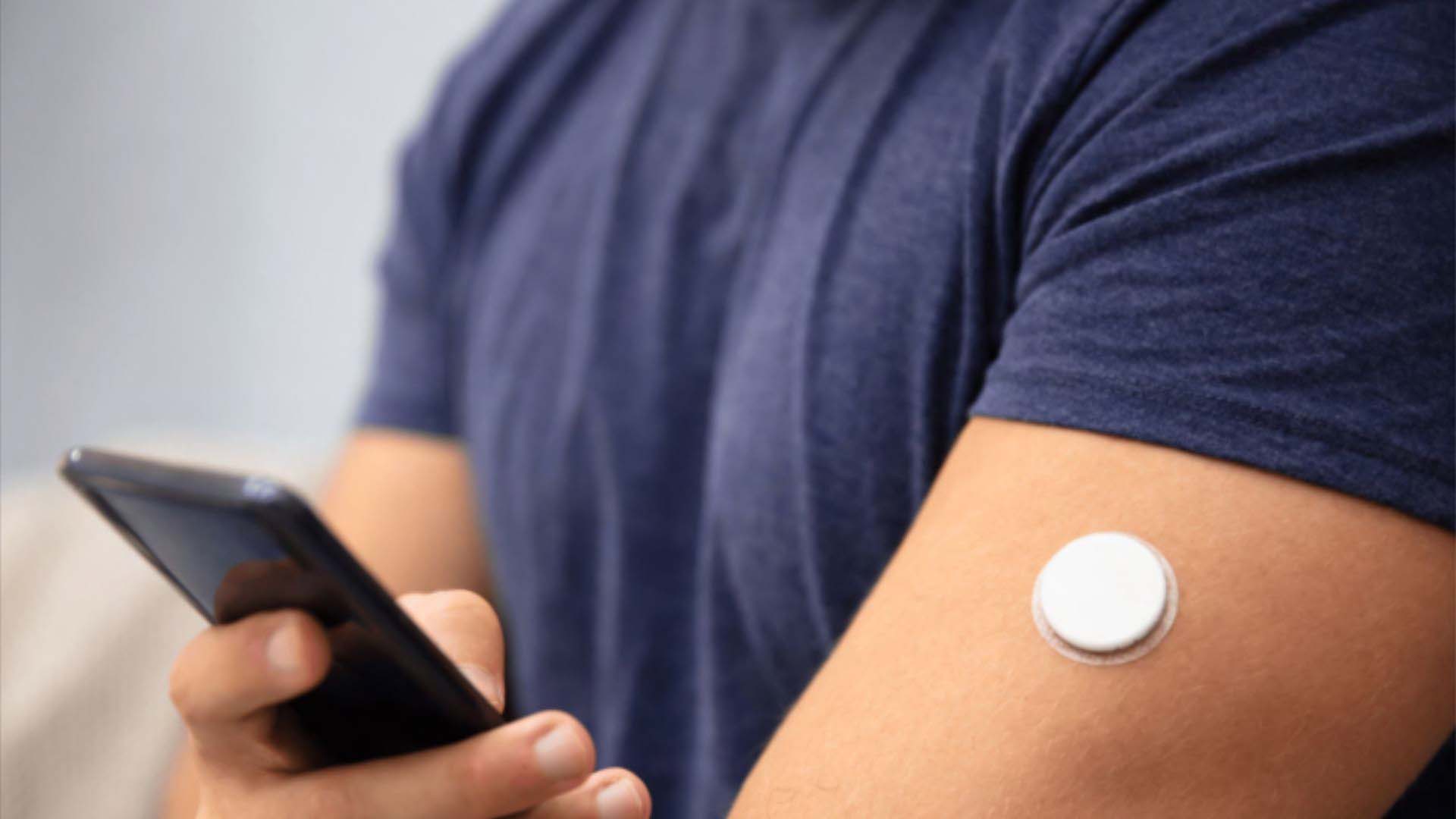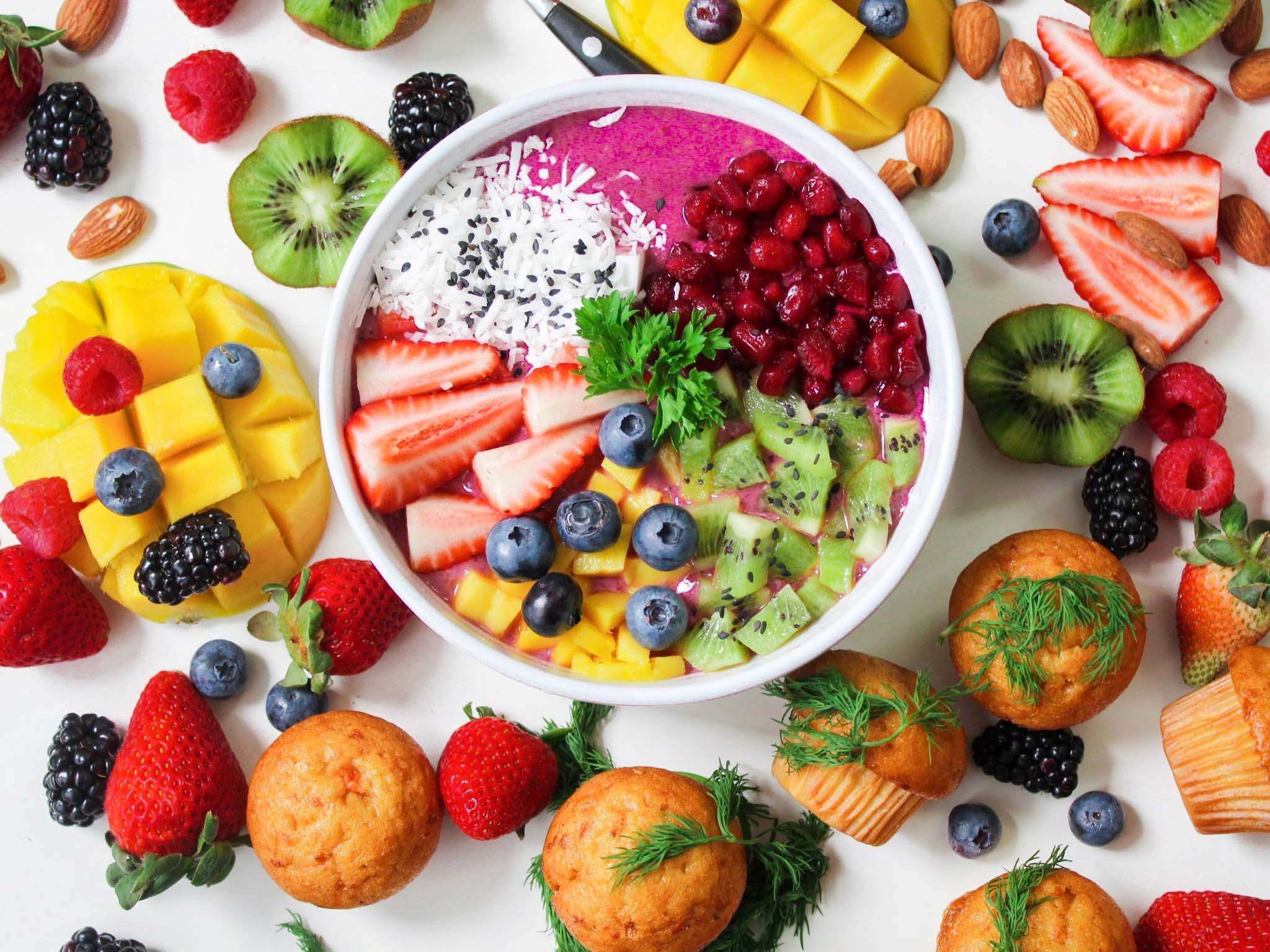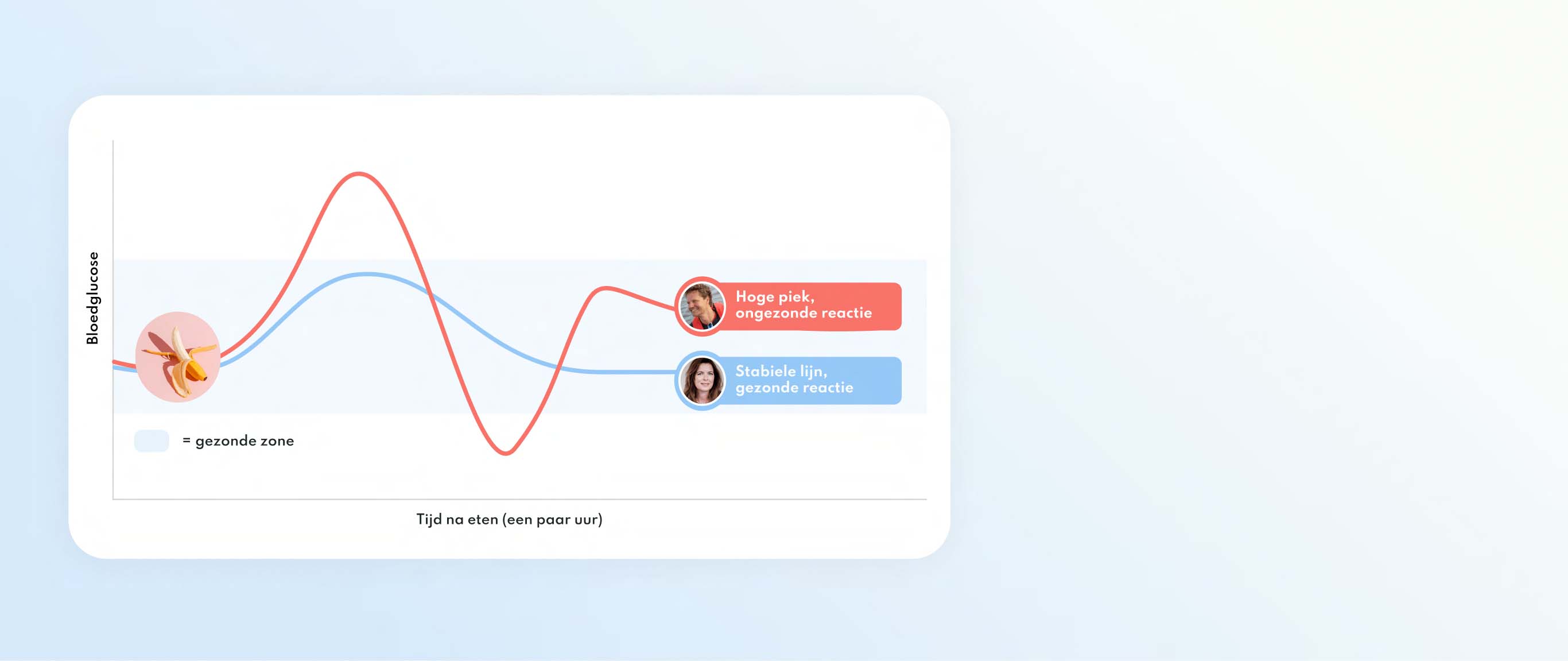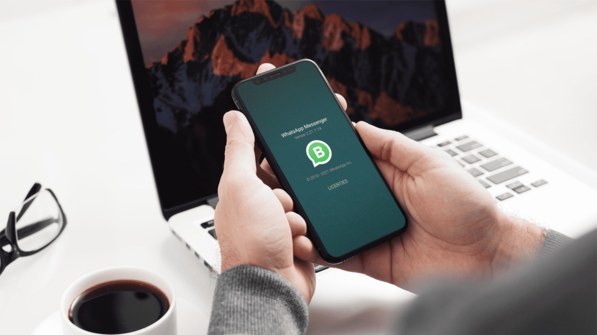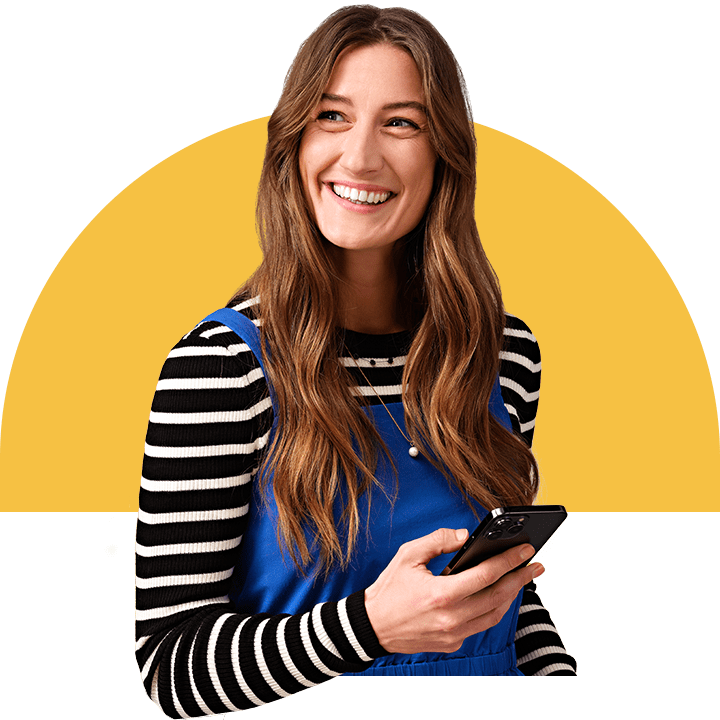Spotlight: Clear - Insightful and healthy living

Every month, we give the stage to a different entrepreneur. They share an interesting and inspiring story about entrepreneurship, successes, valleys and why they started doing business.
This time in the Spotlight: Clear. We spoke to Jim Leseman, Head of Operations at Clear. Clear is a startup working hard to make your health more insightful. They use technology to improve healthcare, by making us more conscious about nutrition. Read the whole story directly. ↓↓
What does the Clear programme involve?
Clear is a programme where we use a sensor to measure blood sugar levels at different times for a fortnight. Clients keep a food diary, noting what they ate at what time. We then look at what this meal has done to blood sugar levels to assess what they should (and should not) eat in terms of energy levels. This creates an individual nutritional recommendation.
Now, we also understand that not everyone wants to live 100% healthy all the time. But it is good that, when you have a busy week on your schedule, for example, you have a plan in terms of nutrition (and possibly exercise) to perform optimally during that week. That's basically what Clear is.
How did the idea for Clear come about?
Together with Antler, an investment platform and global startup incubator, we thought about how we could make the world a little healthier. This combined with technology.
Technology and data are widely used in all sectors. For example, think of the financial sector: your data is tracked and updated in real time, so you can always access the latest information instantly. In the medical world, the opposite is true. To get any data at all, you have to go to a lab to get tested. Then you have to wait for days or weeks and often end up not even getting to see the data itself. We think this should be more insightful, better and faster. And can be.
You talk about Antler, what exactly is that?
Yes, we were helped from Antler. That is an investment platform and startup incubator. They look for new innovative solutions to contemporary problems. They do this with and for startups from all over the world. Many tech startups pitch their proposition here to get investment.
We did this the same way: we had to survive a number of rounds, first pitching our idea to panellists and the rounds after that conducting interviews with some of these panellists. If you make it through to the final round, you get part of the investment you need to develop a Proof of Concept. This is enough to survive for a few months, but trust me: that money runs out quickly! This is also called the 'pre-seed round' and it gives you just enough to make a small start.
In early 2020, we raised €780,000 during the next round, the seed round. The seed round is the first real investment round, so startups can raise the first serious amount of seed capital.
Of the €780,000 we needed, we first got half. To get the other half as well, we had to meet a sales target. Fortunately, we met that the same summer, after which we received the other half of the investment fairly quickly.
What did you learn in that first period? In which you had to meet the sales target.
In particular, we learned that we also had to call customers back. We didn't do that at first; we waited for people to come to our website. Although that was not as obvious as we thought.
Clear is an innovative and complex product. So we really need to explain that to our customers. That's why we started working with call-back appointments.
This way, we explain the whole programme in detail to the potential customer in fifteen minutes. This way of acquiring customers did significantly better and helped us reach the target!
What challenges did you run into when starting Clear?
We started as a classic programme. That involved people coming to our office every Monday evening. Piet Hein, the CEO, and I then presented about what Clear could do for them. That same evening, we placed the sensor with the customers.
In early 2020, I started testing how it works when people don't visit our office. I made video instructions so customers could put the sensors on themselves.
We first did the online instructions via Google Hangouts, but we have since switched to an instructional video in our own app. We find this very convenient, although customer contact in the office has also taught us a lot. Physically, you learn more from people anyway and they are more likely to give more information.
Another learning challenge is discovering how much to do yourself and how much to outsource. At the beginning, we outsourced app development. But this turned out to be quite difficult, because your developers are not sitting right next to you at the table. So we decided to do the app development ourselves and immediately noticed that it works much better.
So we really learned that you have to think carefully about what you outsource. Crucial matters should not be outsourced. Telephony is a good example where outsourcing is a good idea. For the money that a subscription with Rinkel costs, we cannot set up a telephone exchange.
Where did you start?
In summer 2019, the founders started developing the Clear concept. We went live in September 2019 when the first group started with us.
Our approach was pretty classic: we may have had current technology, but very little was automated. As a result, users still had to do quite a lot themselves, unlike now.
The first group was a kind of test. With this, we wanted to see whether people were willing to put down a certain amount of money for the sensor and whether they were willing to put in the effort. We also looked at whether people would change their diet in response to our recommendations. Fortunately, this was all positive and prompted us to go further with Clear.
What is the ultimate scientific basis for Clear?
In 2015, some Israeli researchers showed that your blood sugar level is an important measure of your health. Even in people without diabetes. For example, every body reacts differently to eating an apple: some people will get tired and lose their energy, while others will get an energy boost from the same apple. This study made that clear.
For us, this was the immediate reason for founding Clear. Our programme delivers 'personalised nutrition'. This means that every person reacts differently to everything that enters his or her body. So not only food, but also medication. Which means different medication and also different food has to be prescribed for everyone.
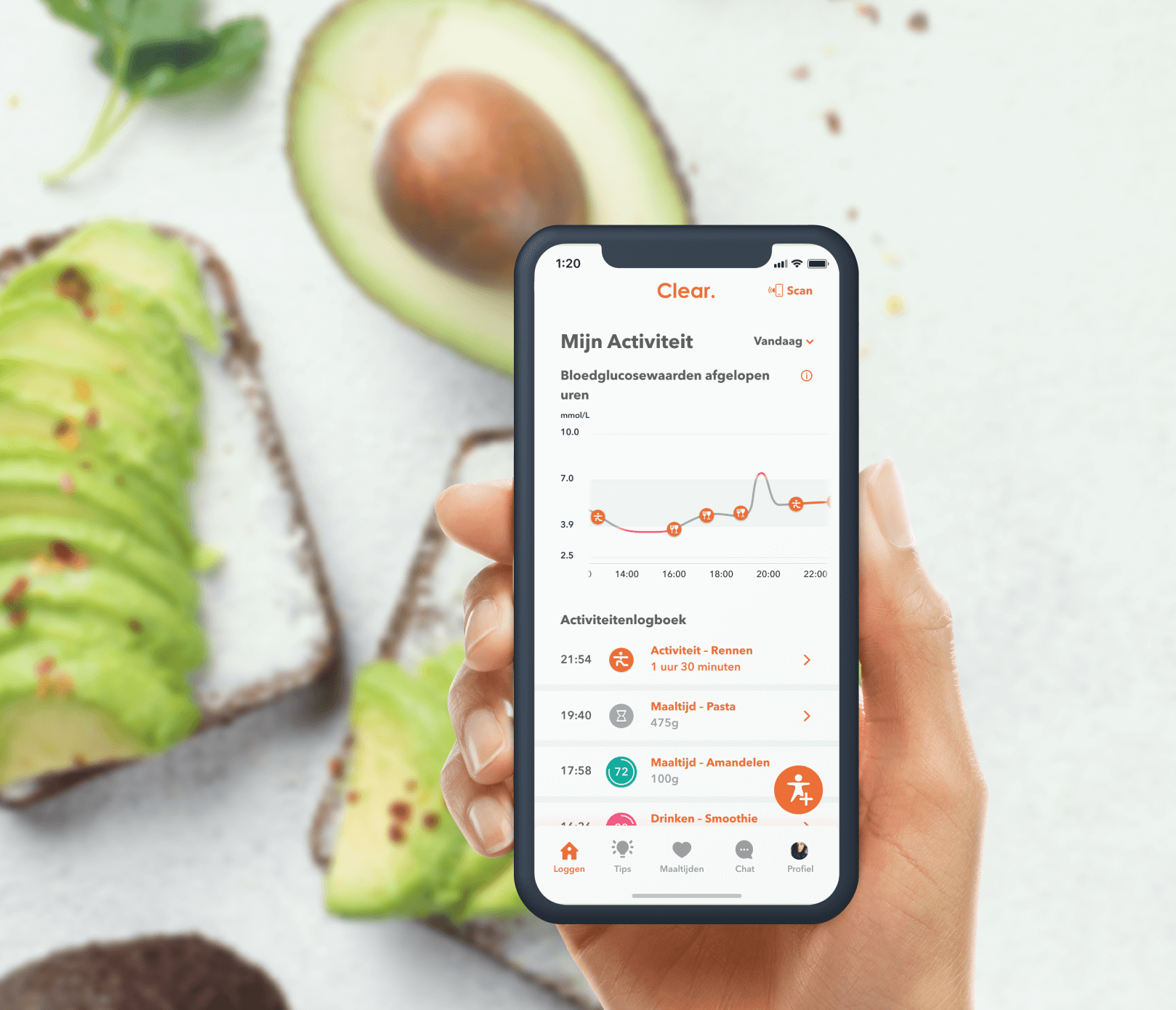
What is your target market?
Our current target group is currently the high-end. This is because sensor technology is still very expensive.
We expect that sensors will eventually become cheaper, whether or not reimbursed by health insurance companies. We are now also in talks with health insurance companies. This is good for us as a company, but also makes it more accessible to be and stay healthy.
For us, it means that our target group will become a lot bigger in one fell swoop. But, until that happens, our participants are in the higher end. These are people who are already aware of their health, but still want to improve it a bit more. Think losing a few kilos, or wanting fewer 'after dinner dips'.
What kind of people are currently Clear customers?
We wanted to be a bit more targeted with our marketing, so we commissioned a survey to find out who our current customers are. Based on postcode, we looked at where our customers are located and then looked at: what type of people are they?
We then looked at who were most satisfied with the results achieved. Two groups came out of this, for whom Clear seems best suited.
The first group are people who are already exercising. They are very conscious about nutrition, but often time is the factor that limits them in this. They have a challenging job and do crossfit or another sport and are of the 'work had, play hard' type. They want to live healthy, but as easily as possible.
On the other hand, you have the 'balance seeker'. This one also does sport, has the necessary knowledge of nutrition and is aware of it. There is the intrinsic motivation in these individuals to exercise more and eat healthier, but often don't know how. In that respect, Clear is perfect for this group: they can find support here.
How many people have done the Clear programme?
Already 1,000 people have participated in the Clear programme so far. And that's within 1.5 years! We are really growing.
The first six months were mainly a pilot. People are coming back more and more and, once we offer subscriptions, that should be much more the case. Acquiring new customers costs a lot of money; retaining customers much less. To reach our existing customers, we need to incur fewer costs. With our subscription forms, we want to make concrete steps in this.
But that is also the great thing about start-ups. You start with something and find out whether something works or not. For instance, for us it was that at first we assumed that our programme was mainly something one-off for everyone in the world, because everyone eats. But, of course, that turned out to be completely different. We found out that you have difficulty retaining your customers in this way and that the price means you really have to make your target group a lot smaller.
Now other players from abroad are also active in this field. How do you relate to these companies?
We ourselves are active abroad on a small scale: in Belgium and Germany. But, we don't really see our competitors abroad as competitors. Every country has its own diet and customs. Just think of gingerbread or a herring sandwich. You won't easily come across that abroad, so there has to be a solution for that in your own country. We also believe the market is big enough to operate in countries where there is already competition. Besides, we occasionally have customers from the United States, while that is where most of the competition is.
Besides these companies, we also talked to a number of other foreign companies that do more or less the same thing as we do. They seem to focus even more on the product and how it can be expanded further, in combination with the sensor.
We are, as you can see, very much betting on algorithms and AI (artifical intelligence). In addition, the technology of our sensor is expected to soon be in smartwatches, for example. This already makes creating added value very important for the continuity of the company.
So such a sensor, there's still a needle in there now. Doesn't that stop potential customers from choosing the Clear programme?
Our sensors contain, in a filament, a so-called applicator needle. This brings the sensor under your skin. This is a flexible needle made of some kind of rubber. The needle itself enters the skin very superficially. Not like vaccination or blood sampling; in fact, the sensor does not enter your blood vessels. This makes it much less intense.
It may scare people off at first, but it is up to us to make it clear to people beforehand that it is not as intense as people think.
In doing so, we expect the application to become less and less invasive. In other words, that you will need to penetrate the skin less and less and, in time, perhaps not at all.
There is a lot of testing with light frequencies and how this can be used to measure blood sugar levels. For us, this is a very interesting technology that we really see a future in.
With the light frequencies, we also expect that it will lower the costs for our programme and you can measure your blood sugar more often for a longer period of time. This offers a lot of opportunities for us.
What is your goal for 2021?
Our main goals are to grow steadily and be ready for the future. This is what we want to use the Rinkel for: to shift gears.
We want to expand to at least another country in 2021 and become much bigger in the Netherlands. We want to be ready to serve 1,000 customers a month. A lot has to happen for that, though.
Before the end of the year, we also want to put the 'food recommender' live for our customers. These are personalised tips on what is best to eat at what time, without having to constantly measure.
We are also active in Belgium; here we are growing steadily. The expectation is that we will now expand to the UK, although we have to see if that will be easy now with the Brexit. A while ago, we also made an attempt to launch Clear in Norway, although privacy laws made that more difficult than we thought.
Is there anything coming up in the short term?
We have just started an exciting new period! In mid-April, our new app went live. Now you not only have the food diary, but you also see a lot of new data. Like, for example, how good your meal was for your glucose level with the Clear Food Scores and glucose graphs per day. And in a week's time, the subscription structure will also go live! We are putting full effort into marketing again and hope to reactivate old customers with these innovations. We are really looking forward to this challenge.
The subscription structures allow us to measure how your body reacts for a longer period of time. We compare this with cluster groups, groups of people who have been measured to react (almost) the same way to certain foods as you do. Using an algorithm, we can thus better predict how your body will react to something you have never eaten before.
How many employees do you employ at Clear?
We have 9 FTE employees. These are people in app development, marketing and myself, for example. We also have 8 employees working in our call centre. These are all students studying in the field of nutrition.
In what respect does Rinkel offer a solution for you?
At the moment, we mainly use Rinkel for answering incoming calls. Fortunately, we are seeing more calls than we expected beforehand and we are also growing in the number of calls we get per month.
But, our plan is to roll out Rinkel among the call centre team employees. They will make follow-up appointments with Rinkel and do so using their own business number. We used to let the employees call with their own 06 number, but so this is going to change. We are going to use Rinkel more and more intensively as we grow. An ideal solution!
